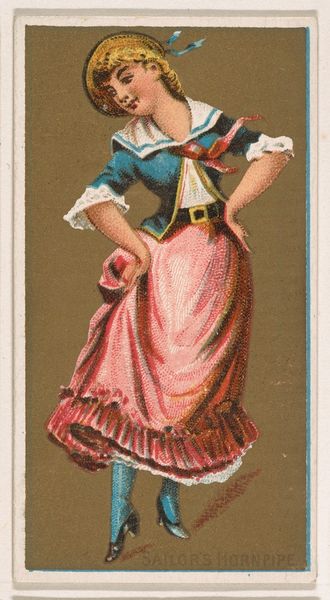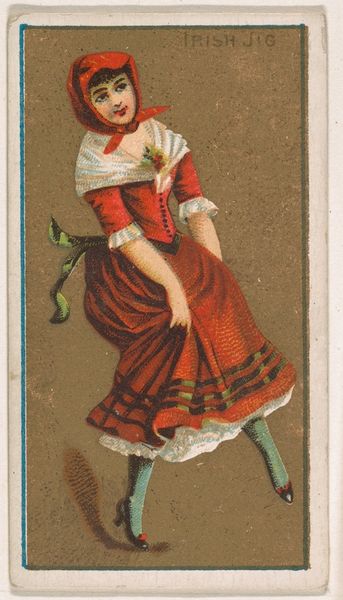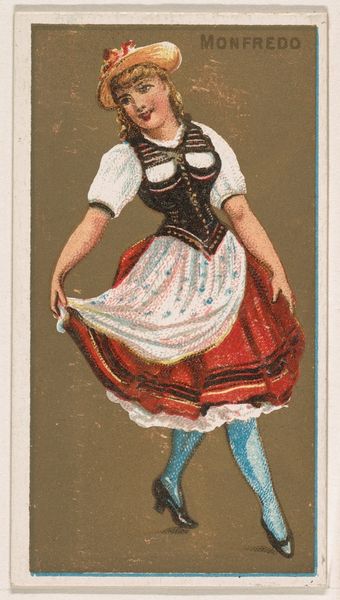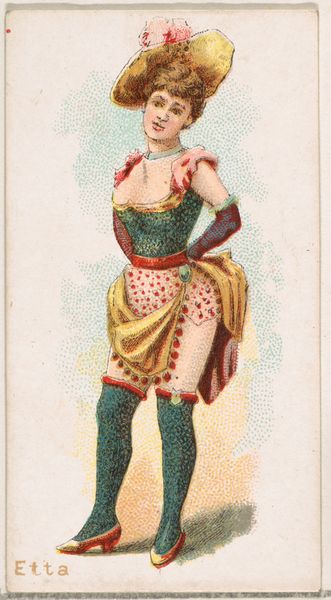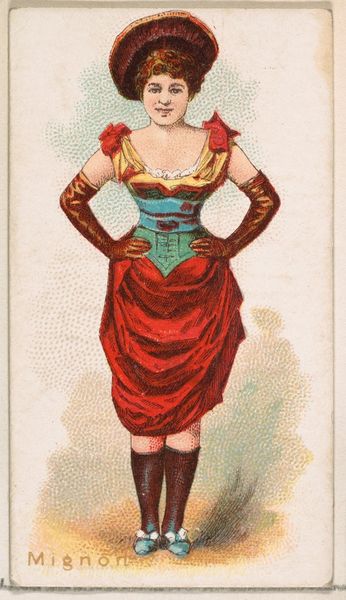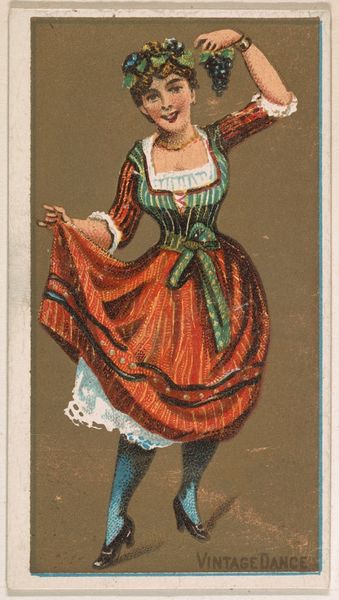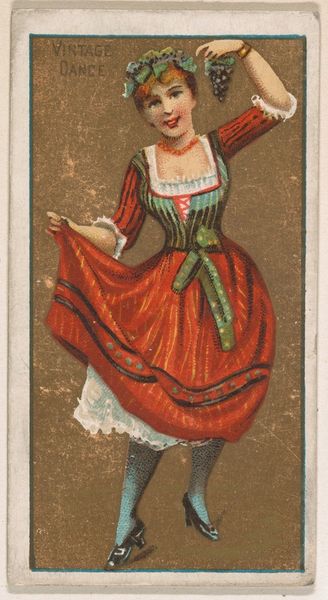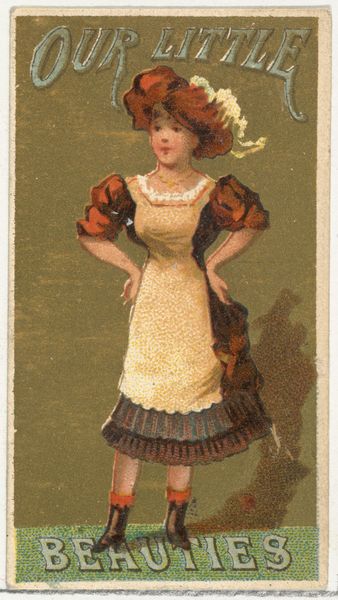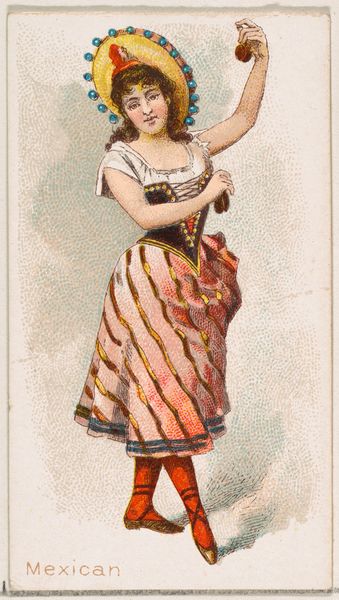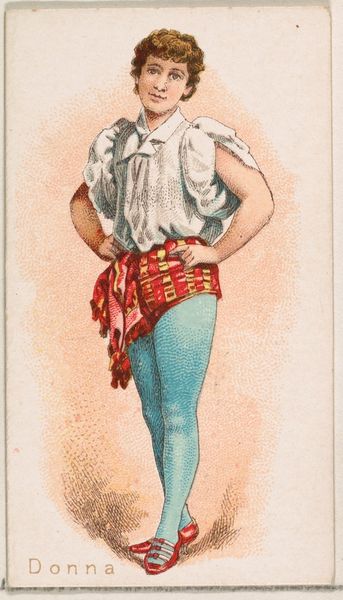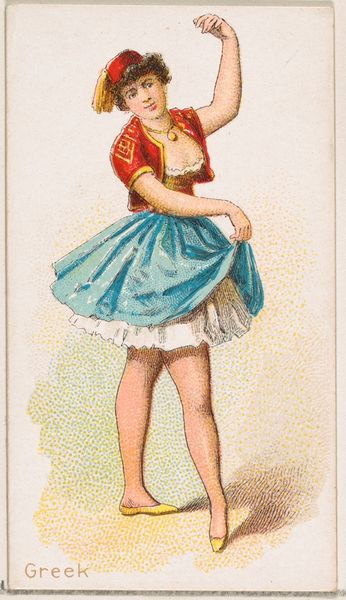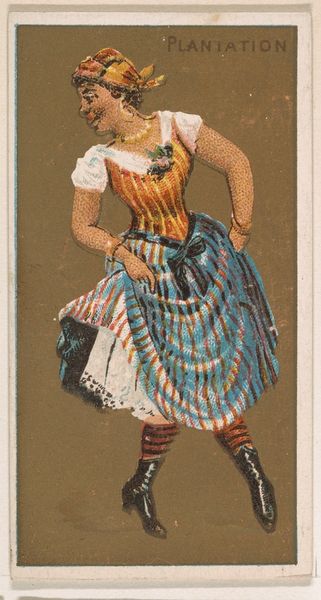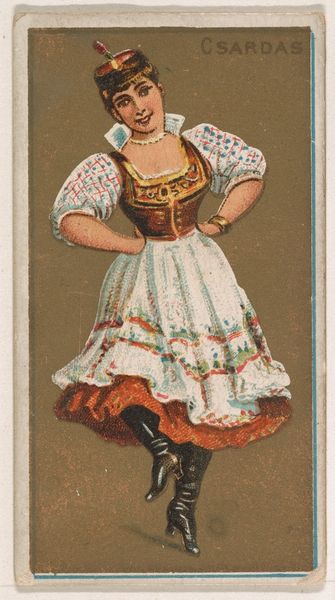
Matelot, from National Dances (N225, Type 1) issued by Kinney Bros. 1889
0:00
0:00
drawing, lithograph, print
#
portrait
#
drawing
#
lithograph
# print
#
caricature
#
figuration
#
portrait reference
#
genre-painting
#
academic-art
Dimensions: Sheet: 2 3/4 × 1 1/2 in. (7 × 3.8 cm)
Copyright: Public Domain
Curator: Let's turn our attention now to "Matelot" a lithograph print from 1889 produced by Kinney Brothers Tobacco Company. Editor: Oh, this is quite charming! The color palette is muted yet vibrant and the woman's confident pose radiates a sense of playful exuberance. The figure really pops against that neutral backdrop. Curator: Indeed. It’s part of a series called "National Dances." These were trade cards included in cigarette packs. Editor: That gives us a crucial understanding of its function within consumer culture. This wasn’t high art intended for gallery display; instead, this image became ubiquitous through the channels of commercial distribution, reaching a broad, possibly even international, audience. The exoticization of the subject, signified by her foreign garment, certainly catered to Western consumption in the late nineteenth century. Curator: Absolutely, this particular card, one of many within this set, captures a woman dressed in what appears to be traditional Dutch clothing. We can focus on her distinct cap, floral apron and wooden clogs. Consider also the execution. There’s a clear emphasis on capturing texture, line, and a limited color palette in order to effectively market the cigarette brand to its customer base. Editor: You raise a pertinent point. It is intriguing how this commercial image attempts to translate cultural identity. This card and its depiction of Dutchness constructs and mediates the reception of an imagined culture for mass audiences. It is not a mere representation but actively shapes the viewer's understanding and perhaps perception of the depicted woman's culture. Curator: Note that her face lacks deep shadows or complex details. The intent seems to be capturing the essence of "Dutch" as clearly and directly as possible without unnecessary embellishment or overt stylistic expressions that detract from a focused attention on national signifiers through costume. The pose is almost iconic in its directness and symmetry. Editor: It’s easy to miss the socio-political implication without context. These seemingly innocuous images played a role in constructing national identity through mass media. By decoding it as such, this quaint portrait references consumerism, othering, and, ultimately, global exchange. I find my appreciation for this piece deepening immensely as our analysis draws to a close. Curator: And understanding how seemingly mundane artifacts such as cigarette cards can hold significant clues and ideas surrounding mass consumption as well as social attitudes through focused formal study is quite enlightening for me as well.
Comments
No comments
Be the first to comment and join the conversation on the ultimate creative platform.

